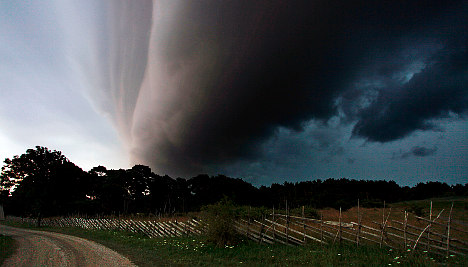Starting in the south and moving up through the country, the blazing summer weather gave way to thunder and lightning and torrential downpours throughout the day. In the far south, Ronneby was hit by flooding in some 50 cellars.
“We got around 40 millimetres in half an hour. It was pretty heavy stuff,” said local fire chief Torbjörn Svensson.
At around 5pm lightning struck the power cables linking the Baltic island of Gotland to the mainland, depriving all 37,500 of Gotlands Energi AB’s customers of electricity. The company was able to resume some services by employing energy reserves from gas turbines in Slite.
By 9.30pm the mainland cable was fully operational and around 99 percent of customers had got their electricity back. The storm continued to hover over the island however and a number of houses were flooded. Emergency services were also kept fully occupied by automatic alarms activated by flashes of lightning.
Less severe storms were expected to hit Norrland on Sunday while the rest of the country can expect a gradual return to sunnier weather. Temperatures however will not reach the giddy heights of last week.
“It will be more like a normal Swedish summer with maximum temperatures of 25 to 26 degrees,” said Therese Fougman at meteorological agency SMHI.



 Please whitelist us to continue reading.
Please whitelist us to continue reading.
Member comments